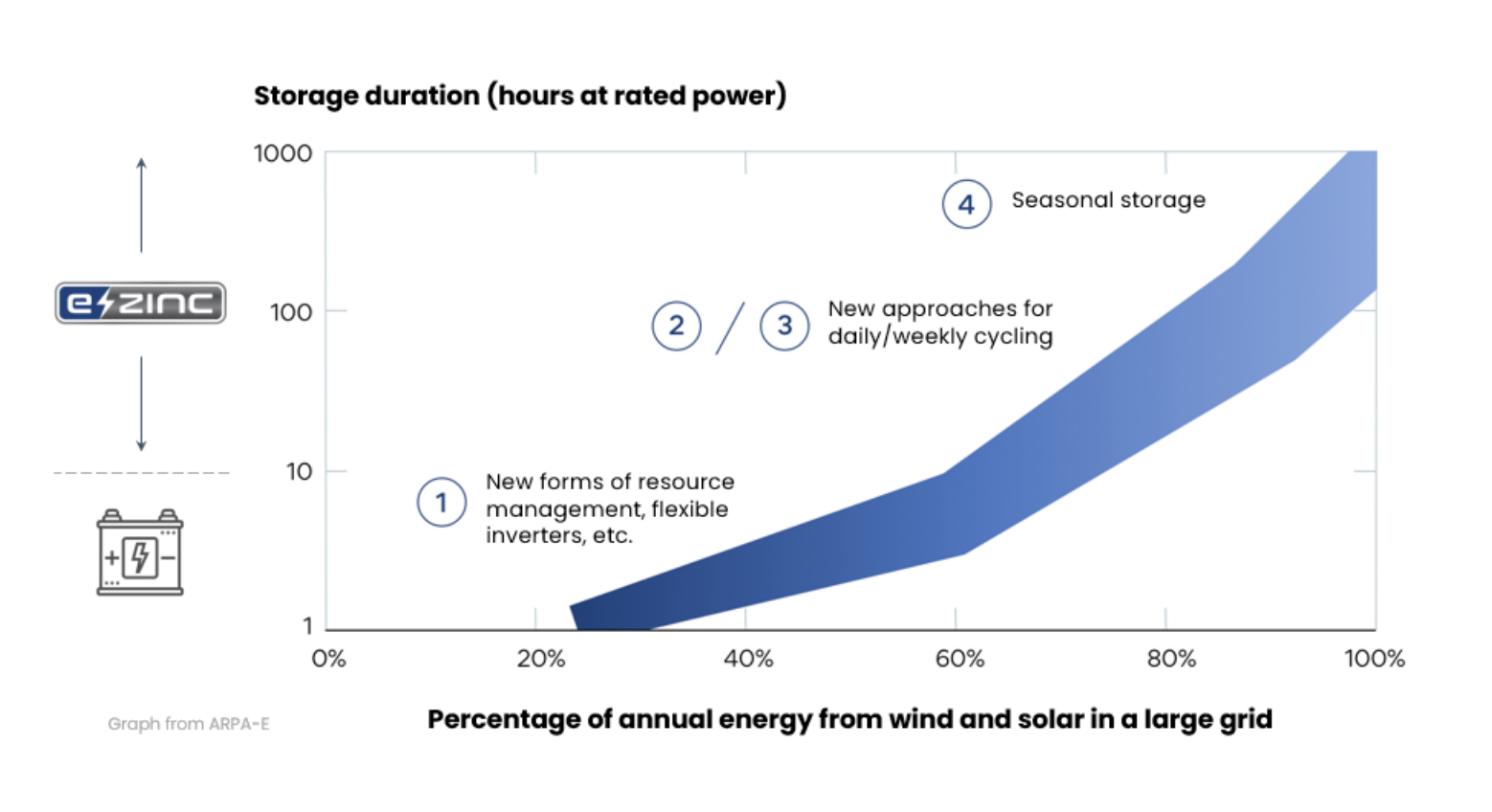One of the critical paths to curb greenhouse gases (GHG) is to transition the world’s power sector to more sustainable forms of energy generation. However, the rising share of renewable energy generation in the power mix will cause structural strains on the grid created by new flows of electricity and by the inherent variability of wind and solar power. Electricity markets are being presented with three challenges:
One of the solutions to these challenges is e-Zinc’s long-duration energy storage technology. e-Zinc’s technology is widely deployable and scalable and has relatively low lead times, compared to the upgrading of transmission and distribution (T&D) grids. The flexibility of e-Zinc’s design means systems can sized for a variety of durations of hours, days, weeks or even seasons to ensure that grids can continue to operate smoothly. e-Zinc’s current embodiment is targeting 12-100 hours of duration, but has the potential to be designed for longer durations in the future as the market needs mature. This is critical because as the penetration of renewables increases, there is a commensurate increase in the duration requirement of storage assets. The following graph is a synthesis of a study conducted by ARPA-E and illustrates that while batteries are sufficient in the near term, we need solutions like e-Zinc’s technology to achieve our decarbonization goals:

States like Hawaii and California have already established their paths to 100% renewables, both by 2045, and these markets offer an insight into the significance of this market. One study published in the MIT Technology Review illustrated that California would need twenty times (20x) its existing energy storage capacity when it achieves its 50% renewables target. Most strikingly, it’s predicted that the state would require four thousand times (4,000x) the existing energy storage capacity by 2045 once renewables account for 100% of the energy system. In response, California has stated that it intends on procuring 1 gigawatt (GW) of long-duration energy storage annually, beginning in 2026.
Modeling by the Long Duration Energy Storage Council suggests that long-duration energy storage has the potential to deploy 1.5 to 2.5 terawatts (TW) of power capacity globally by 2040 – this is roughly 10 to 15 times the total storage capacity deployed today. The scale of these numbers reflects the multiple use cases for e-Zinc’s technology and the central role it can play in balancing the power system and making it more efficient.
Click here to read the Long Duration Energy Storage Council’s report and learn more about this significant market opportunity.